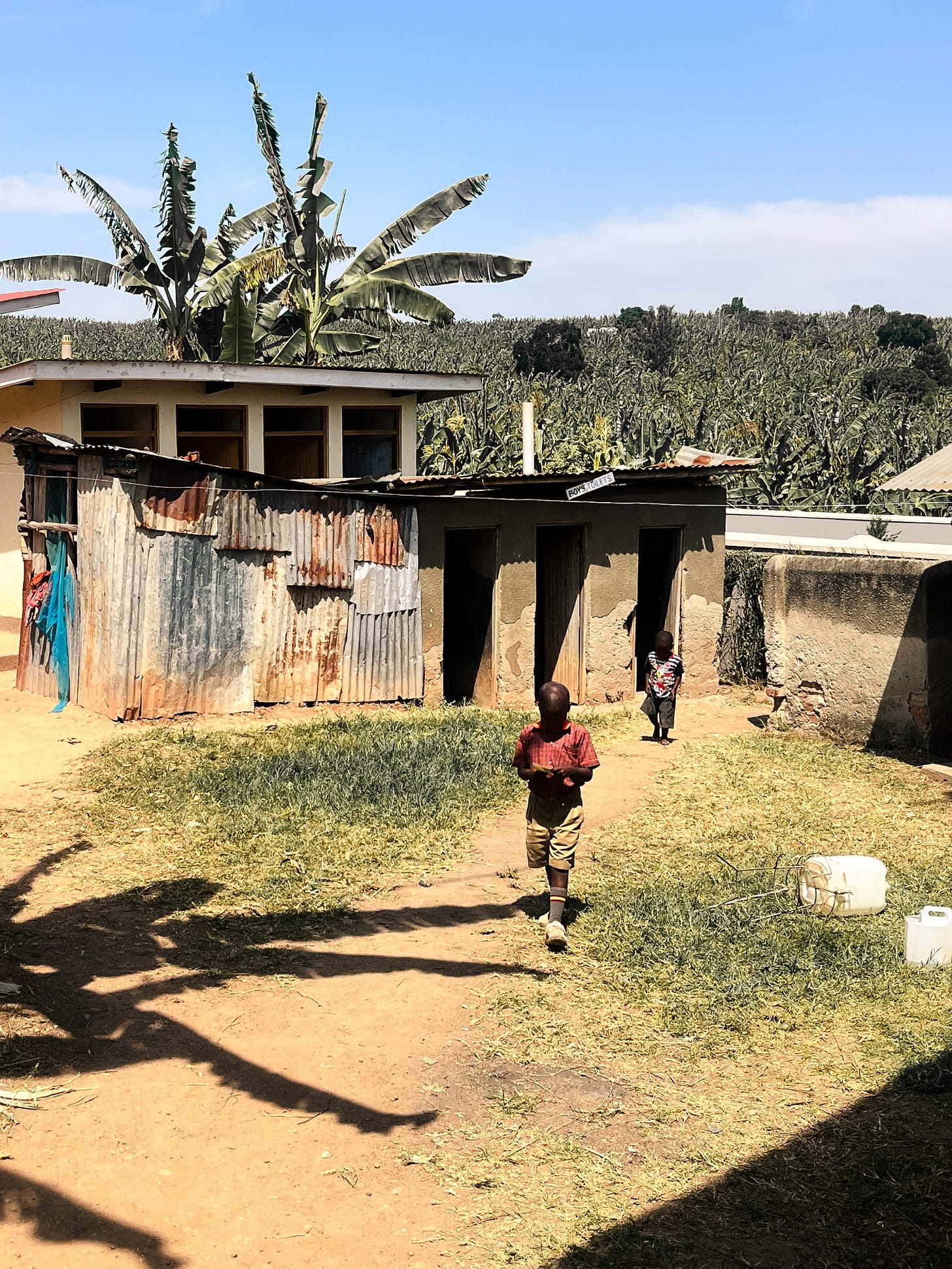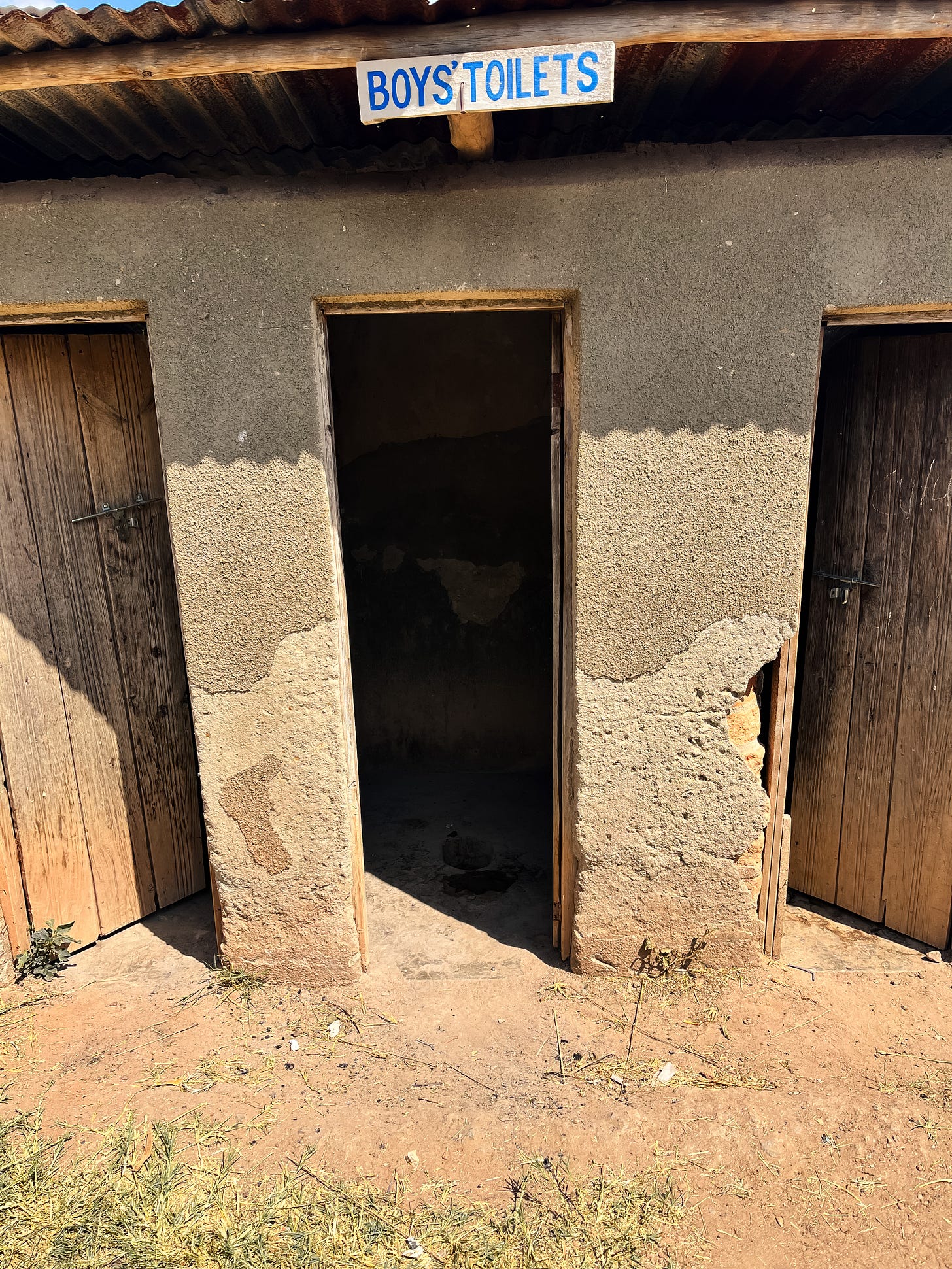Improving Facilities at Ngaara Primary School
Opportunity to help finance a micro impact project
In addition to our main objective at Ngaara Primary School, which is securing longterm funding for the food program (work in progress), we also want to support the school in other ways. We came out here to Uganda with donations from colleagues, family, and friends, with the goal to spend that money on necessities for Ngaara. In total, this amounted to EUR 2,250. After spending a lot of time there during the last few weeks, we have identified some priority projects that would immediately benefit the school.
The first priority is an additional water tank for rainwater harvesting. Last week we finalized the itemized budget for this, and have signed off on an amount of 500 EUR for completion. The construction of the tank base is already underway, and we will go into more detail on that at another time.
The second priority is a new boys latrine (toilet facility). Currently the boys latrines consist of three 20 year old „pit toilets“. Pit toilets are effectively 3 metre holes in the ground that are used up to the point where they are filled, before being demolished and covered over. This means that the full pit stays in the ground, and after 20 years of use at Ngaara, you can imagine how bad the smell is at this stage. The pits are enclosed by brick walled cubicles, and in this case the structure is in extreme disrepair. The headmistress also expressed the urgent need for a new toilet structure for the boys, as well as a better waste management solution. Advantages of pit toilets include low upfront costs, low maintenance and little to no water consumption. The disadvantages include the odor, and the fact that the toilet can only operate for 20 years, before it needs to be covered over and demolished. This patch of land containing the pit full of human waste is not reusable.
Since the rural location of the school means that it does not have access to main sewer lines, the only alternative to a pit is a septic tank. These modified latrines would mean that the waste is collected in an underground plastic container, which is periodically pumped out and emptied. The waste would then be treated at a wastewater treatment plant. This means that the latrines can be used for much longer than 20 years, as well as the fact that the ground is not polluted, and the odor is significantly less. The durability of a septic tank means that it is a more environmentally friendly option for the school, and when it is properly maintained, it rarely needs replacing.
We would like to provide new modified latrines with a septic tank for the boys at Ngaara. We have an initial estimate of around 2,200 EUR to complete this project. This itemized budget would still need to be discussed in detail with the engineer, but given that we are now familiar with the cost of bricks, sand, cement, etc., we would assume that the remaining amount of the donations (1,750 EUR) would not cover the project to completion. While we are happy to cover the difference, we also thought that it would be a good opportunity to involve our loyal readers. If you would like to get involved and donate to this project at Ngaara, please reach out to either one of us directly. Any contribution, big or small, is welcome and can make a difference. If we have a lot of interest, we could disclose the third priority project to you all…










